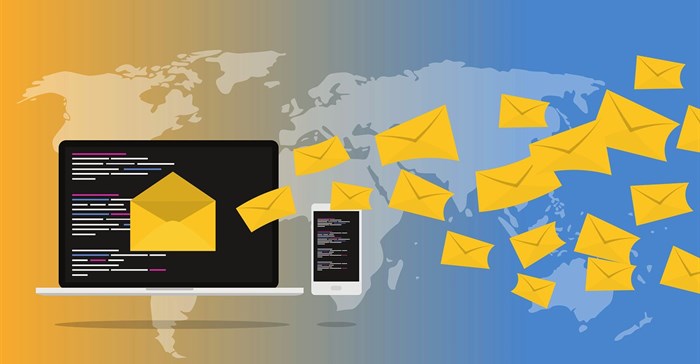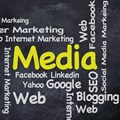Standing the test of time, through Myspace, Facebook, Instagram, TikTok and even a global pandemic, email marketing is still one of the most effective methods for reaching and engaging target audiences.
In a recent virtual masterclass run by Africa Travel Week, Amy Knight-Dawson, travel journalist and founder of Scribe Consulting, went back to the basics of email marketing to help tourism professionals tap into the true superpower of a strong newsletter.
“Although e-mail isn’t considered part of the social media spectrum, it shouldn’t be shortchanged as an important communication channel, especially during the current Covid era,” she says. “Masterful email campaigns are fairly inexpensive using platforms like Mailchimp or ConvertKit, and are a way to build trust, to keep directly in touch with your audience and to generate leads.”
As a recap of her masterclass, here’s the who, the why, the how, the when and the where of email marketing – all the important components to consider so that it all comes together cohesively.
The why of email marketing
While social media packs a punch when it comes to online marketing, Amy highlights a few stats showing that 73% of millennials prefer communications from businesses to come via email and marketers who use segmented campaigns, note as much as a 760% increase in revenue.
“We all like to do business with those who we know and trust, and the medium of email allows you to talk to your audience directly, which means that they’ll get to know you a bit better,” she says.
Email offers a quieter space to communicate your value proposition, unlike social media, which she compares to the feeling of standing on an airport apron next to a Boeing Dreamliner.
“There is a lot of noise on social media that email marketing can cut through. You’re not just shouting into the void but rather having a conversation. And because your audience has signed up willingly to your mailer list, they have invited you into their inbox to hear what you have to say. Take advantage of that and talk to them one on one.”
The how of email marketing
There are certain components that make up an email. This is called the architecture of an email and includes text, merged tags, branding, images, and subject lines, which Amy says can make or break an email.
“Don’t be too quirky or clever in your subject line or use too many emojis. Call to actions work well but also understand that people don’t have a lot of bandwidth, especially on mobile phones. There’s not much space so try to keep it to 50 characters or less.”
She also asks us to think about how our audience would like to be addressed. “I don’t know about you, but I receive emails that address me as ‘Hello Amy Knight-Dawson’ and it feels so impersonal!”
Once you’ve stuck the landing with the architecture of your newsletters and emails, you need to consider the tactics of your strategy, which Amy explains as being your email sequences or drip feed campaigns.
She says: “Drip feed campaigns consist of a series of emails automatically sent to a specific audience segment. These can be used to slowly entice them, and just like dripping honey, each email should be sweet, offering them something that they are craving and want to know more about. With a well-built sequence you’ll need a solid idea that you want to ‘feed’ your audience but most importantly, you should keep it coming.
She also reminds us that with every mailer you send you’ll also want a call to action to entice customers into your sales pipeline.
The who of email marketing
It’s important to remember that while many marketers will tell you that everyone is moving to social media, up to 50% of the global population still uses email.
“It’s important to keep tabs on trends, especially with new online platforms, but an inbox is a powerful place to be. Email marketing is still successful because it is subscriber driven. You are talking to an audience that wants to hear from you and has chosen to hear from you.”
In the Africa Travel Week masterclass, she also stressed the importance of knowing exactly who you are talking to and that you should try and get as much information as you can from your subscribers when they first opt into your mailer.
“Everyone can’t receive the same messages and be moved in the same way. Very much how you boost certain posts of social media, you can also choose your specific target demographics when it comes to email.”
The segmentation of audiences (aka omnichannel marketing) allows you to talk to people about the right things. As Amy explains, “Selling travel products to families with teens is very different to how you would do to families with little kids. The messaging needs to be slightly different.”
And while it’s important to talk to the right subscribers about the right things, it’s also important to maintain your database when doing so. “Email bounces will penalise you so it’s important to check if they are hard or soft. Soft bounces can be due to email address spelling errors whereas hard bounces are from emails no longer in use.”
When it comes to growing your email list, it’s important to make sure people have signed up and given their consent to receive emails from you. “Emails carry a report abuse button so be sure to check if any of your subscribers have reported you. Too many reports can be detrimental to your business,” she says.
“The General Data Protection Regulation (GDPR) came into effect in 2018 and regulates data and how it can be collected, so it’s important that your databases aren’t in contravention to these laws.”
The when and where of email marketing
Consistency is key when it comes to email and certainly staying true to your brand, but you also want your message to be received at the right time.
“Reaching your audience in Covid times is very important, especially those in different time zones. A way to work around that with email is scheduling your emails to bring people from around the world into your community.”
When it comes to frequency of sending out emails, there is no blueprint or one size fits all approach. Whether you send out mailers weekly, daily or monthly it all depends on what works for you and your brand.
“It’s important to keep checking your reports and open rates but generally, I’d avoid Mondays and Fridays, although things are a bit different during Covid and people are spending a lot more time online. I’ve found that people are checking emails a lot earlier or later at night,” says Amy.
As a rule of thumb, she points out that less is more. “At the moment, people are experiencing information overload and are reading less. Don’t be afraid to keep it short and now and again send a meatier email. Also, don’t forget to repurpose your email campaigns. There is nothing stopping you from creating blog posts to then share over your social media channels.”
If you’re completely new to the world of email marketing, Amy emphasises that the best thing to do is to play around with a cost-effective platform like Mailchimp to see how it all works.
Click here for the full recording of Africa Travel Week’s virtual masterclass entitled The Power of Email Marketing.







































